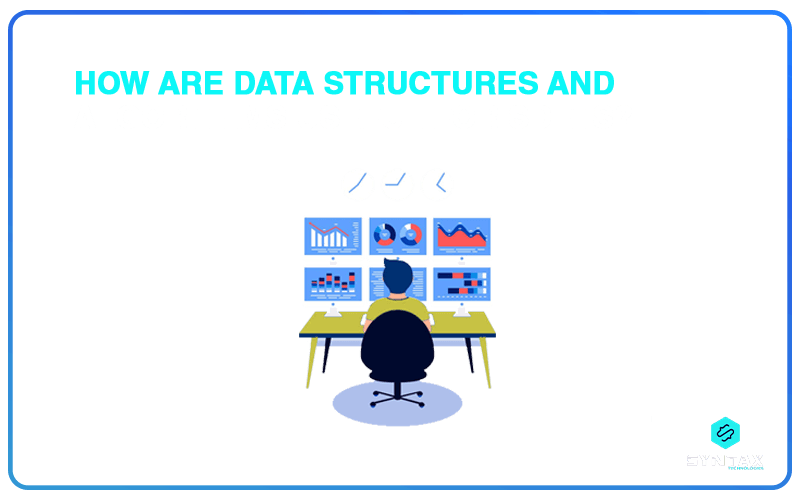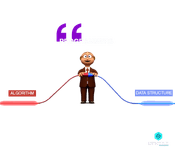Get your Data Structures Correct First; and the Rest of the Program will Write Itself. – David Jones
The given statement points to the significance of paying heed to the question of Data Structures and Algorithms when it comes to the efficient execution of a software development lifecycle. The role of Software Development/Design Engineer in Test (SDET) is a rapidly blooming position within the technology sector.
They are quite often held to be the same as manual testers; however, technically speaking, this is not true. Testing is definitely one of the core job responsibilities of a QA Automation Tester; however, it is not his only job role.
An SDET embodies multiple skills and is, as such, involved in the development, designing, automation, and testing activities of the software lifecycle.
In this blog, we will be looking at the way in which Data Structures and Algorithms are useful for SDETs. Given the fact that Data Structures and Algorithms happen to be the foundational stones of computer science; SDETs are quite directly associated with the handling and management of these entities.
What is SDET?
SDET stands for Software Development/Design Engineer in Test. This position refers to an IT professional who remains engaged in both software development and testing.
These are professionals who are skilled in Software Development as well as Quality Engineering. They not only participate in developing and writing test scripts, but SDET testing also helps in fixing bugs as part of the process.
Thus, they help in replacing repetitive manual testing with automation and are an integral part of the operating systems’ lifecycle which includes bug fixes.
What are Data Structures and Algorithms?
Data Structure is essentially a way of organizing data. Data tables and sequences of numbers are instances of Data Structures.
It refers to a system of data management, organization, and storage format that provides for easy access to data.
The Data Structure can be understood as a wardrobe with separate racks for storing and sorting things. This helps in the efficient organization of data, which can be extracted at any time.
Algorithm can be understood as an instructional blueprint which lays down commands in a sequential manner, to be executed in order to get a desired output. Algorithms can be seen as a linkage between inputs, procedure and outputs.
If Data Structures are static entities, Algorithms are dynamic processes which interact with them in order to produce desired results.
Types of Data Structures and Algorithms
Some of the common types of Data Structures across different programming languages are:
- Primitive
- Integer
- Float
- Character
- Boolean
- Non-primitive
- Stacks
- Linked Lists
- Arrays
- Graphs
- Queues
- Hash Tables
- Trees
- Tries
Some common types of algorithms are:
- Binary Search
- Depth First Search and Breadth First Search
- Merge Sort
- Quick Sort
- Insertion Sort
- Dynamic Programming
- Graph/Tree Traversing
- Hashing and Regex
How Data Structures and Algorithms is useful for SDETs?
As already stated, SDETs are actively involved in software development. This role is impossible to be accomplished without a comprehensive understanding of Data Structures and Algorithms.
Such knowledge is indispensable for fixing bugs in developer’s code as well as in carrying out code reviews. It is important to remember that QA Automation Testers are responsible for conducting tests as well.
However, they go beyond Manual Testing and seek to automate scenarios for seamless execution of Automation Testing. This involves building of advanced systems which can help in extracting bugs. Such an act is not possible to be carried out without an inherent understanding of Data Structures and Algorithms.
Knowledge of Data Structures and Algorithms is also crucial as far as SDET interview is concerned. SDET aspirants are often questioned with the intention of understanding their approach towards solving any problem.
They might face questions wherein the interviewee asks them to find unique chars in string, duplicates from array or to reverse a string. All this would entail the need to have an in-depth knowledge of Data Structures and Algorithms.
This is all the more important because as a SDET aspirant, you will be expected to come up with multiple approaches to solve a given problem.
You may not eventually be able to solve the problem; however, it is important to show your resilience in terms of coming up with new ways for doing the same.
Conclusion
It is evident that Data Structures and Algorithms are of considerable utility to an SDET. As an IT professional with more than one feather in his hat, knowledge of Data Structures and Algorithms only helps add a competitive edge to your QA Automation Tester resume.
When faced with questions such as those asking you to check whether a string has balanced parentheses, you will be required to demonstrate much more than your knowledge of coding constructs. You will be required to showcase your understanding of using the appropriate Data Structure to solve the issue.




